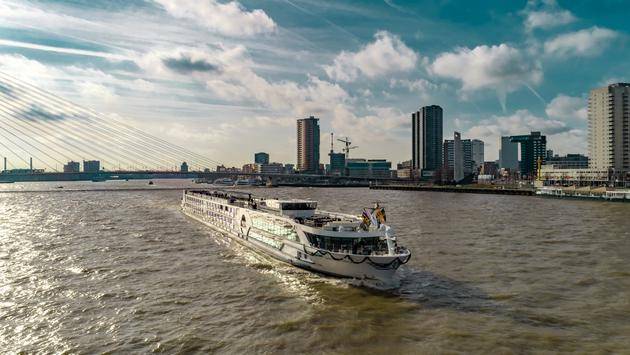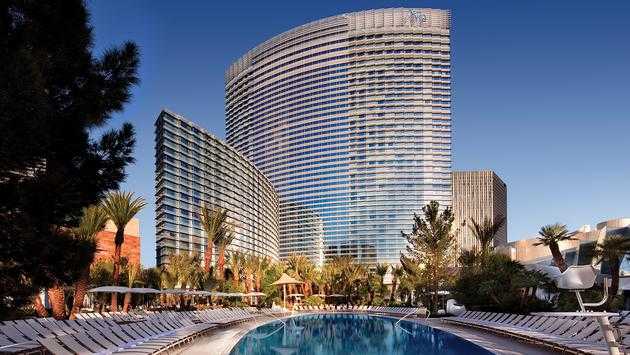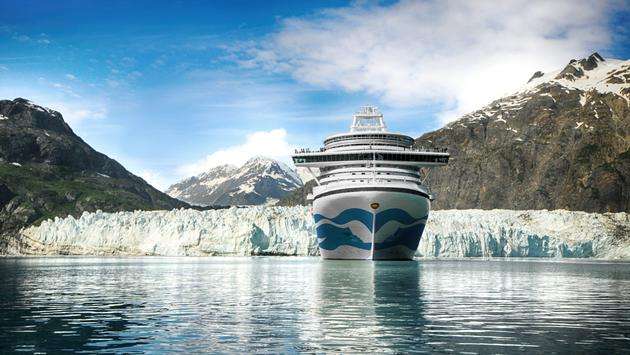October 03,2021
Colorful Italy (6) -- Venice
by Bin Xu
Play: free travel, petty bourgeoisie, photography, humanities
The author went to these places
Venice
the grand canal
San Marco Plaza
Rialto Bridge
The bridge of sighs
Governor's Palace
St. Mark's Church
bell tower
Florian Cafe
College Bridge
Franchetti Gallery
Color Island
Glass Island
Published on August 5, 2013 19:41
Colorful Italy (6) -- Venice
Venice, a romantic place with rich imagination: surrounded by the blue sea, winding water lanes, gondola under the small bridge in the middle of the painting, countless gorgeous buildings floating on the water, Venice, a romantic dream floating on the blue waves. With its unique water city scenery, splendid history and culture, and romantic masquerade carnival, Venice is one of the most tourist cities in the world. There are many "water cities" in the world, but Venice is most worthy of its name and reputation. First, it is surrounded by water. Second, it has many waterways inside. Third, the city is built on a tree trunk in the water.
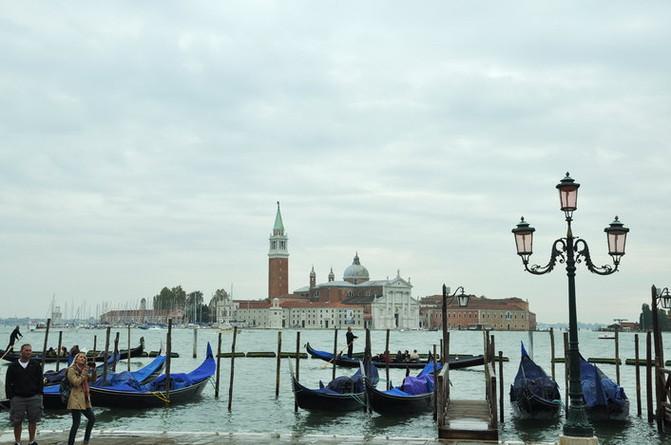
Venice is a city of water
Water is the source of Venice. When I was writing this travel note, I was moved by the enterprising spirit of Venetians, and the idiom "unite as one" suddenly popped out of my mind. I think the construction of Venice is the most appropriate example to interpret this idiom. In those years, countless people forced by war and livelihood fled to this water country. After generations of painstaking efforts, they laid "billions" of stumps in the mud and paved the way. The bridge was built and the water city was built on the stump. In fact, Venice's way of building a city is the same as that of water villages in Southeast Asia, but Venice has finally become a city. Venice is located in an inland lagoon in the Adriatic Sea. It is built on a shoal 4 kilometers offshore and surrounded by seawater. It is composed of 118 small islands. Venice in a narrow sense refers to the old city on the main island, with many waterways in it. It is a place where tourists are fascinated. Under the condition of safety, Venetians began to live and work in peace and contentment, and gradually developed. Water is the only living resource of Venetians. They use water transport to develop transportation and trade. Venetian merchants are increasingly prosperous and famous. Venice, which became powerful in 1204, took part in the Fourth Crusade and captured Constantinople (today's Istanbul, Turkey). Later, it defeated its maritime rival Genoa, another Italian maritime power, and finally established Venice's maritime supremacy. Marco Polo, who came from a merchant family, crossed Eurasia to China in order to explore a new business road. The new silk road also opened up a channel for Venice to increase its wealth. In its heyday, the wealth of Venice was equal to that of Ming Dynasty in China, and the population of the Ming Empire was more than 500 times that of this small country! But as the saying goes, "good flowers don't bloom often, good times don't last long." later, Spain and Portugal discovered the new continent of America. With the change of European maritime trade routes, the invasion of the black death, and the attacks of Napoleon and Austria, Venice had no choice but to lose its flowers and gradually declined. In recent years, with the rising water level, the old city of Venice is also in danger. Many people abandon the city and move to the mainland to settle down. The fate of Venetians has always been entangled with water. They come by water and go by waves. Water can carry a boat, but it can also overturn it. In those days, the Venetian fleet rode the wind and waves to dominate one side, carrying the wealth of all sides; Today, shipbuilding, the pillar industry, has long been a yellow flower of yesterday, and businessmen have changed their ways, leaving only those old and gorgeous buildings to attract tourists from all over the world. Today's Venice has been transformed into a service-oriented tourist city. It is still a ship, but warships and merchant ships have become traffic. Ferries and small sampans are bustling on the water of Venice, continuing the prosperity of Venice. The water is still carrying the boat. An artificial Levee with sea on both sides connects Venice with the mainland. No matter you fly in the sky or run on the ground, the first thing you see when you come to Venice is water. After I got off the plane and got on the bus to the city, I was surrounded by the blue water outside the window. I just felt like I was riding on a fast speed boat on the sea. Far ahead, a lot of colorful houses stand on the beach, waiting for distant visitors - I believe all new visitors will be as excited as me: Venice! Get off at the station, change the boat, get on the bus of Venice - ferry, and start the journey of Venice along the famous Grand Canal. There are no cars on the main island of Venice. All princes, ministers, peddlers and pawns take boats or move. It's called water city. The river is the street and the boat is the car. The S-shaped Grand Canal is the largest river channel of the main island. It divides the main island into two parts through the urban area, and is also the main road for traffic. There are many small rivers on both sides of the Grand Canal intersecting with it, forming Venice's water traffic system which is as dense as cobweb and extends in all directions. On the Grand Canal, hundreds of boats compete with each other, and thousands of sails compete with each other. Among them are ferries, and on both sides are gondola. It's very lively for you to come and go. Don't underestimate the Grand Canal. Its meaning has gone beyond the definition of a river.
From the Grand Canal's starting station, santaluccia railway station, to the terminal station, St. Mark's Square, notice that when you get on the ferry, you have already begun your journey to Venice! You'd better do your homework in advance, hang your camera on your chest, take a tour guide with your hand, and squeeze it in the bow or stern (the trunk can't be taken care of). Along the way, you can see from left to right, look up and down, and a lot of buildings come one after another. The essence of Venice is spreading before your eyes. Everyone loves beauty, and the ancients also love "waterscape house" just like modern people. Along the two banks of the river, there are numerous luxury houses, churches, palaces, markets, shops, old bridges and docks. The "solidified art" products show the charm of Venice. The artistic vocabulary of eastern and Western architecture intersects here. The Grand Canal is the exhibition corridor of Venice's history, culture and life. The Grand Canal is not only the landscape corridor of Venice, but also the creation stage of photographers. Because of the narrow streets and lanes of Venice, there is often not enough distance for shooting buildings, and the Grand Canal provides enough space for people. Especially in the morning and evening sunlight oblique, color temperature beautiful, but also for good "color" provides a stage to show their talent. Find a section of S-shaped turning river with light in the opposite direction. The background is the church bathed in the golden setting sun. The close-up view is the boat passing by. The point, line, surface, light, shadow and color are all available. What a beautiful picture of Venice. Cherish it, my friend. It is suggested that those who have time and are interested take a boat to shoot back and forth on the river sooner or later.
When the ferry arrives at the terminal, St. Mark's Square, notice that this is not the end of your tour photography, but the beginning of another one. In front of me is the most familiar and representative Venetian landscape painting: the foreground is a row of sharp silhouettes of gondola, the middle is the blue sea, and the opposite is the ochre church. The foreground, the middle and the background constitute a well-defined and colorful picture. Gondola and the church, facing each other across the sea, are partners. They are the protagonists of Venice. Whether day or night, standing on the waterfront pier of St. Mark's square can bring you endless enjoyment. In the early morning, the sea has not yet awakened, the misty morning fog has not yet cleared, the street lights in the square are still shining, the church opposite is all washed out, and what unfolds is a simple and elegant gouache painting. During the day, the sun is shining high, the docks are noisy, the masts stand in the water, the high-rise buildings on the shore are lined up, the tourists shuttle on the road, and the boats and boats fluctuate on the waves, showing the prosperity of Venice. In the evening, the setting sun sprinkles golden light on the sea surface, reddening the opposite church. The side light carves out the three-dimensional feeling of the building, and gives gondola and the boatman a golden outline and an oil painting like landscape. At night, all the prosperity receded with the tide, only the silhouette of gondola in black on the deep blue sea, gently swaying with the waves, the church on the other side became more mysterious in the misty light, I sat on the dock, bathed in the cool sea breeze, immersed in the tranquility.
Innumerable rivers, like a net, build the main island of Venice, which can be said to be the soul of Venice. They connect thousands of families in all directions to make it a city; They weave the unique water city life of Venice; They sing and sing, eulogizing the unique romantic style of Venice. These small rivers are narrow, quietly in front of thousands of households. The riverway near San Marco Square and Rialto bridge is a busy place. The houses along the river are dressed up neatly and magnificently, but when you go to the residential area inside, you will only have the old appearance. In the wing, you can enjoy the colorful and luxurious hotels; In this side room, you can peep at the neighbor's daughter of an ordinary family. The history and culture of the ancient city are like a kaleidoscope, waiting for you to explore and taste with your own pace. The restaurant near the river, a window, a balcony, and a couple become a beautiful picture on the river. In the daytime, gondola is carrying tourists with high spirits to wander in the river. Boatmen are beaming to describe those long-standing stories. From time to time, there are "singers" performing for tourists on the boat. A tenor such as "my sun" floats in the water lane, showing the characteristics of Venice's water city. In this country rich in opera, there are so many tenors. As night falls, the buildings are reflected in the water by the dim and peaceful river lights, which are hazy. In every corner of the water city, a quiet picture in the description of the city's mood. There are many rivers in Venice, but everywhere I go, there is no garbage in the river. Apart from the hard work of the cleaners, it benefits from the civilization of the residents and tourists.
Venice is the city of bridges
Where there is a river, there is a bridge. Venice's 450 bridges of different sizes, shapes and colors are a major feature of the water city, which is the culture of the water city. If we compare a winding river to a staff, the bridges and small bridges, like the notes on the line, compose a romantic song of Venice. Due to the narrow space of Venice, there is no spare place to build the approach bridge, so the bridges in Shuicheng are all high arch bridges. According to the width of the river, these arch bridges are divided into towering "donkey shaped arch bridge", gentle slope "semicircular arch bridge", full arch shape "slightly sinking arch bridge" and "various forms of arc arch bridge". Roaming in Venice is a constant "up and down enjoyment". These high and low arch bridges also break the monotony of the water city, make the flat visual space vivid, rich in changes, and increase the sense of rhythm. Venice's bridges include wooden bridges, stone bridges and iron bridges, and the bridge railings are full of patterns: stone columns, iron railings, cast iron branches, mixed wood and iron, single-layer and double railings... From a distance, you can see a bridge, but you can't see what is at that end of the bridge. When you climb to the top of the bridge, you will see a square hidden in the deep, a curved waterway, another bridge connected by a bend, or the doorstep of a family. As for the famous double bridges in Zhouzhuang of China, they are nothing in Venice. Let alone the double bridges are common things, the three bridges are not uncommon. The bridge is the main element of the landscape of the water city. The bridges with different shapes, with different waterways and houses, stand on a sailor with a hat strap and other guests, and become a myriad of pictures. The bridge is the best viewing platform for water city scenery. Look, deep in the water lane, a gondola shakes over, as if from history. The bridge is a stage for Venetians' life and a stand for tourists. The host and guests jointly create the water city life of Venice.
Among the numerous bridges, two are the most popular. Ponte Di Rialto all people entering and leaving Venice have to pass under the grand arch bridge on the Grand Canal, which has a history of 1000 years. Riato bridge, also known as the commercial bridge, is made of white marble, which is the symbol of Venice. The two ends of the bridge are supported by 12000 wooden piles inserted into the water. Today's bridge deck is lined with two rows of gold shops and various gift shops. It is not so much a bridge as a long house across the canal. The bridge is full of tourists all day long. You can see all kinds of faces poking around the bridge at any time. Even at night, there are bright lights and crowds. Along the river on both sides of the bridge are mid-range restaurants with white tablecloths, selling waterscape and eating sentiment. At night, people are more crazy than during the day. For Venetians, San Marco Square is the center of tourists, and their center is the riato bridge. In the period of ancient Venice, with the bridge as the boundary, the political center was on the side of St. Mark's Square. Venice's original customs, banks, and many trade associations were here. On the opposite side of the bridge is the traditional downtown area, which is about people's daily necessities. Rialto bridge is the commercial symbol of Venice. It has been the commercial center of Europe for 300 years. Shakespeare's famous play the merchant of Venice is set here. Up to now, it is still the living area of Venetians. Under the opposite bridge, there is a large market on the right. In the first lane on the left, there is a small restaurant with a long line at the door every day. This area, known as Sao Paulo, is surrounded by small streets and alleys. However, the famous Fu
This is where Santa Maria Gloriosa Dei frari is hidden.
Ponte Dei trearchi is actually a connecting corridor between two buildings. Sighing bridge was first named sunset bridge, which connected the court of Venice Viceroy palace and Venice prison at that time. In the past, prisoners were tried and convicted by the governor and sent to prison through this bridge, so it is also a "bridge of darkness" symbolizing suffering. There are two small hollowed out windows on the bridge. Prisoners pass by and look at the bustling scene on the grand canal outside. When they think of the pain of losing their freedom, they can't help but sigh. Hence the name of sigh bridge. There is also a saying that the prisoner sighs when he sees the beloved outside the window already embracing others. Although the sighing bridge is only a short corridor, the Venetians, who are full of artistic sentiment, also want to give artistic flavor to this place which represents the dignity of law and the terror of prison. Architectural style is the early baroque style, in the simple and generous modeling, there is no lack of sculpture decoration beauty. The two small windows are carved with marble into meter shaped hollow patterns, which play a role in lighting inside and beautifying outside. The "leakage" of the window makes the bridge body breathable and avoids the plain "stuffy". The whole bridge and the tall buildings on both sides set off each other, breaking the dullness of the large blocks on both sides, which makes it small and delicate in comparison. As a matter of fact, these two bridges are not very attractive, just because they were born in Venice, a treasure land of geomantic omen, and just because of the herding behavior of everyone.
Bridge in the night, in addition to enjoying Venice's various bridges in the daytime, I also like to watch and photograph the peaceful bridge in the night light. I wandered around the streets of Venice and asked the shop where there were many bridges. The answer is, there are bridges everywhere. At first, he also paid attention to his position and direction. Later, he walked along the alleys and looked for bridges everywhere. In Venice, it's difficult to photograph a small bridge. Because I didn't think I could see bridges along the river. There is no "River". On both sides of the bridge are people's houses. The walls of the houses stand upright in the water. You have to walk along the alley. When you see a gap, it is a bridge. Seven around eight around, I came to the residential area far away from the downtown, where there is no red and white, only quiet houses and quaint bridges. The night receded, the bustling tourists in the day, the night covered the colorful buildings, the small bridge accompanied the old house standing silently on the water, a quiet picture. Under the dim yellow light, the water is as flat as a mirror, the reflection is swaying, dim and hazy, quiet and beautiful, which makes people reverie. On the riato bridge, you will be inspirational, life needs to struggle; On the sighing bridge, you will feel sorry for the short life; Here on the nameless bridge, you will have an epiphany and praise the peace of life. All around a quiet, occasionally passers-by reminded me that this is a living ancient city. In my opinion, Venice at night is Venetian's own, ancient and quiet, while in the daytime, it belongs to tourists. Some "elegant" guests choose to take gondola at night to visit the river course of Venice. Standing on the bridge, I watched a couple of tourists sitting in the boat from time to time, quietly passing through the "pictures" in the river. Everything was quiet: quietly rowing and watching, adding an elegant and romantic atmosphere to the "spring night" in Shuicheng. It is often easy to say "sentiment". In fact, sentiment should be created artificially. Looking at the broken bridge in the water, what a poetic scene, it's moving.
(a few tourists are drinking in the "door hole" of the hotel at night. Seeing me take pictures of them, they are more and more crazy, which adds some romantic color to the night in Venice.)
Venice is a city of art
Venice has not only water and bridge, but also splendid culture and art. According to Marxist theory, the economic foundation determines the superstructure. The merchant of Venice on the rich side does not only know how to make money greedily as Shakespeare described. The increase of wealth promotes the prosperity of art, which can be seen in the squares, palaces and churches all over Venice. Due to its location and maritime trade, Venice absorbs different nutrients in the communication with all parties, and its architectural style is unique among Italian cities. Without the grandeur of Rome and the simplicity of Florence, it combines the decoration of Byzantine, the nobility of Rome, the grandeur of Gothic and the bright colors of Arabia, interweaving a piece of Venetian magnificence. That's why old Venice is still wonderful. Plazza San Marco (Piazza San Marco) Plazza San Marco is the glory of Venice and the heartland of Venice. Venice without Plazza San Marco is unimaginable. It concentrates the essence of Venice - St. Mark's church, governor's palace, bell tower, cafe and so on. Basilica? San? Marco if St. Mark's Square is the heart of Venice, then St. Mark's church is the heart of this zone. It is said that Saint Mark, the disciple of Jesus, was buried in the church. He is the author of the gospel of mark, and is regarded as the patron saint by the Venetians. When you approach the church, the first feeling is that you are dazzled and don't know where your eyes fall first. The mosaics on the five arches of the church show how the Venetians smuggled the remains of St. Mark back from Egypt. Looking up again, the four bronze horses (the real ones are collected in the church) snatched from Constantinople during the Crusade are waiting to leap. On the dome balcony of the middle gate stands the statue of St. Mark holding the gospel of mark, surrounded by six flying angels. At the top are five huge onion tips, shining in the sun. With all kinds of statues and patterns, facing the dazzling facade of the cathedral like a kaleidoscope, you have to calm down and carefully see which immortals are there. The church's five domes, more than 400 granite columns, marble floors and walls are covered with brilliant mosaics. One of the most dazzling is the "golden altar". Behind the altar is a Pala? D'Oro, decorated with more than 2500 diamonds, rubies, pearls, topaz, emeralds and Amethyst. On the central dome is a huge mosaic of Jesus ascending to heaven, and below the altar is the tomb of Saint Mark. Don't forget that there is also a museum on the second floor with genuine bronze horses stolen from Constantinople. Byzantine dome and decoration, Roman arch, Renaissance railings, Greek cruciform church structure - this church can be regarded as a rare collection of architectural art styles in the world, a rare art treasure. Although the Sofia Cathedral in Istanbul is magnificent and magnificent, it is the second largest Byzantine style church in the world after Sofia. Church free, gold screen 2 euro, inside is not big, light line is dark, no photography. The small gate on the right side of the gate can be used to climb the church platform for payment.
Palazzo Ducale, also known as the Ducal Palace, is a Gothic building. It used to be a government organ and court, and also the residence of the governor of Venice. The most eye-catching feature of the governor's palace is its external wall. The wonderful combination of the Arabian wall diamond flowers and the Gothic pointed arches and pillars is recognized as one of the most beautiful works in secular architecture. Its facade adopts continuous Gothic pointed coupons and flame pattern corridor, and each column of the small arch has a cross round hole. The composition is unique, the color is bright, and it has a strong Arabic flavor. It makes a square governor's palace light and transparent, which is full of the beauty of plan style. The governor's palace stands by the water, and the architectural style of the virtual bottom and the solid top matches the floating Venice island. It and the nearby St. Mark's Cathedral have different forms and complement each other, enriching the architectural art of St. Mark's Square. Art form is always the reflection of the political economy of the times. The colonnade of the governor's palace expresses the publicity and openness of Venice as a commercial city at that time. The official residence of the highest official is not heavily guarded, but transparent and open. It can be compared with Florence's city hall, towering towers and defensive castles, reflecting the closed characteristics of medieval feudal city-state. Therefore, people should combine the architectural art with the background of the times to understand, in order to truly grasp its essence. We should first read ten thousand volumes of books and then travel ten thousand miles. The two complement each other. Traveling is not just getting off the car to take photos and get on the car to sleep. You can regard it as the best way and process of learning.
The visit to the viceroy's palace actually starts when you line up outside. The row of pillars under the eaves are each carved with vivid figures. The "Giant Ladder" in the inner courtyard, with 30 broad marble steps, stands a huge sculpture of the God of war and the God of the sea, symbolizing Venice's hegemony on the sea and land. There is also a "gold ladder" in the building, which is named because there are painted gold walls on both sides. There are a lot of famous paintings and halls in the palace, all of which are very luxurious. Each room has very beautiful frescoes. What's most worth seeing is the Sala del conglio Maggiore on the third floor, the highest institution of the Republic and the largest hall in Italy. It's 54 meters long and 25 meters wide. It's a standard swimming pool. It can hold 1700 people without a pillar inside. It's amazing! The huge conference hall also reflects the characteristics of public politics. The governor of Venice is elected, but the executor of the conference resolution is not an autocrat. Paradise by Tintoretto is based on Dante's divine comedy. It covers the whole wall, 7.45 meters high and 21.6 meters wide. There are more than 700 characters in the painting. It is the largest oil painting in the world at that time, and can be called the masterpiece of Venice's art peak period. After visiting all kinds of magnificent and beautiful halls and rooms, you will go from glory to destruction. The above sighing bridge leads you from the magnificent government to the hideous prison. By contrast, you will cherish your law-abiding life.
(governor's Palace)
(this beautiful 15th century Gothic door next to St. Mark's Church used to be the entrance to the viceroy's Palace)
(Giant Ladder in inner courtyard)
(a large conference hall with a huge oil painting paradise, the whole ceiling is covered with murals)
(see St. Mark's church through the railings on the second floor of the viceroy's Palace)
"The most elegant living room in Europe"
The square of San Marco, which Napoleon called "the most elegant living room in Europe", is worthy of its reputation, similar to the Plaza of mayor in Madrid, Spain. There are so many piazzas in Italy, but they vary in size. Most of them are just empty spaces on the street. In such a narrow water city as Venice's main island, it is not easy to have such a square covering an area of 10000 square meters. This is an important place for Venice to hold grand festivals, political activities and religious festivals. It is surrounded by St. Mark's Cathedral, governor's house and other medieval buildings on three sides, and faces the sea on the other side. The 98 meter St. Mark's bell tower on the square is towering, which can bring the panoramic view of Venice into the eyes. During the day, the square is beautiful and popular. The bustling tourists create the atmosphere of the square. At night, the square is not only charming but also full of sentiment. On the brightly lit square, all the scenic spots have closed their doors and tourists have come to the cafes. Coffee shop is the protagonist of the evening square. The day belongs to history, and the night is for the present. At this point, we have to introduce the cafes in the square. There are many cafes in the corridor around the square. One of the famous cafes, Caffe Florian, started in 1720, can be called the world's oldest coffee shop. The polished marble tabletop, the elegant and comfortable red velvet chair, and the fine and gorgeous Arabian flowers on the wall are all full of enchanting ancient colors. They are the places for artists and writers in the 19th century, including Byron. Of course, the others are all good, including Balzac, Hemingway and Wagner. It's just that most of the local people don't come here to drink coffee. It's too expensive. I have seen the price list. The seat fee is 6 euro per person. There is only one coffee with the lowest price of 6 euro, and the rest are more than 10 euro. Don't forget, Italian coffee is only a small cup, much smaller than China style baijiu. There are three famous time-honored caf é s in the square, which have small bands and improvise various skits for guests. They are very popular with tourists because of their superb skills and flying looks. They compete with each other in an orderly manner. Generally, you sing and I appear on the stage, and they perform and rest with each other in turn. The elegant Mozart Minuet, the beautiful Toselli serenade, the sad Schindler list violin, the swaying Danube Waltz, the happy Rumba rhythm, the crazy Jazz swing... Are all classic tracks familiar to the public, with great lethality. The wonderful performance made the audience from happy to sad, and from calm to crazy again. They hummed along with the melody, danced along with the beat, clapped and cheered. The band and tourists interacted, creating an atmosphere in the square. In addition to "wearing a long shirt" sitting to drink coffee, more is the peripheral "short play" stationmen, they do not pay "rub listen". It doesn't matter. Other musicians don't dislike it. As the saying goes, "if you have money, you can have a money market, if you don't have money, you can have a personal market". They are the main force of "people market". If there is no contrast of that piece of head, after all, it is off-season. The rare scenes are always not good-looking, and the musicians may not be able to lift their spirits to pitch forward and backward. If you are a music fan, if you want to "listen", you can go back and forth from one house to another in one night, until you are happy. The night is deep and the people are quiet. Most of the nightclubs are on the doorplate. Only these dedicated melodies are still winding around the open square... St. Mark's church is the soul of the square, while the cafe is the sentiment of the square. It is also unimaginable that there is no cafe or band in St. Mark's Square. It is strongly recommended that you go there to experience it whether you are a music fan or not.
(the cafe in the arcade around the square.)
(the band in the cafe is playing.) Although St. Mark's Square is the heart and soul of Venice, there are many "others" in Venice. Otherwise, Venice would not have such charm. The Church of Santa Maria della salute is translated as "Ankang church". Although it is not as magnificent as St. Mark's Cathedral, it is also a shining pearl of Venice because of its good location. The Church of salut stands at the mouth of yunhekou. Anyone who comes to Venice will not miss it. It looks like a lady with a gorgeous corolla standing at the door of Venice's living room, smiling at the guests. The church is a masterpiece of Baroque architecture in Venice. It is a gift from the government of the Republic to the Virgin Mary at the time of the black death in the 17th century. Built on more than one million four meter long wooden piles, the church was completed in 1687. The exterior of the church is magnificent, but the interior is very simple. There is an octagonal hall under the dome, surrounded by six small chapels, and a huge chandelier in the middle adds a mysterious artistic atmosphere to it. The altar sculpture and Titian's three oil paintings are the pride of the church. The church is on the opposite side of St. Mark's Square. You need to go there by boat or by the art school bridge not far from next door.
As Santa Maria Gloriosa Dei frari crosses the Rialto Bridge and Sao Paulo District, you will be startled by the towering church that suddenly appears in front of you, standing out in the streets and alleys. There are treasures hidden in the mountains. Despite its simple appearance, there are so many treasures in it. This 14th-15th century Gothic church is an important church in Sao Paulo district. The size and quality of the art in it are amazing. Don't miss it! Titian, Giovanni, Bellini and other masterpieces are eye-catching. Titian's altarpiece "the virgin ascension" is the treasure of the town hall. Even the choir chairs are very exquisite works of art. The chapel on the right side of the altar is amazing. The neoclassical style marble tomb designed by the sculptor Canova Antonio is pyramid shaped. In front of the ivory door, there are saints standing in mourning and praying, and they seem to be ready to enter the tomb. Flowers and angels are carved around the tomb door. They are vivid, imaginative and appealing, gorgeous and solemn. I appreciate the works of art, and I suspect I am in an art museum. Unfortunately, photography is not allowed in the church, so we have to take a photo to introduce ourselves. Santi Giovanni e Paolo, which is not far away from Venice, has been competing with Frey's Notre Dame of glory for who is the greatest Gothic church in Venice. It is famous for its grand scale and cold architectural style.
Galleria? G? Franchetti?alla?Ca’? D'Oro) as mentioned earlier, the Grand Canal of Venice is a river of art, a river of view. Because there are countless luxury houses on both sides of the river, nobles and businessmen vie to build "rooms with a view" along the river. Various styles of architecture compete along the river, such as Byzantine, Lombardy, flame Gothic, Baroque, Rococo, and the Grand Canal, It's really an excellent viewing gallery of architectural art. There are more than 100 palaces along the river. Most of them were in the 14th to 18th centuries, and it is hard for ordinary people to see them all. But the golden house of DORO is still worth seeing. In fact, it's hard for you not to see - you have to pass in front of the building to get in and out of Venice by boat. The beautiful balcony is the highlight of the palace. Gothic style of the white column geometric modeling graceful, revealing a strong Arabic style“ The "Golden House" was named after the use of the most expensive paint at that time and the addition of gold foil to make the exterior wall as dazzling as gold. After years of constant erosion and river water, it has faded a lot. The palace is now the Galleria franchetti, a collection of Venetian paintings, especially Titian's.
Gallerie? Dell'accademia? Venezia? Venice's culture and art are mainly reflected in architecture and painting, so for those who love art, to Venice, the academy art museum is not to be missed. The greatest achievement that European Renaissance brought to Venice is shown in painting. A painting style named "Venetian school" came into being. The most important feature of Venetian school is the bold use of color and the depiction of the dynamic state of life. Venice painting school was formed in the late 15th century and flourished in the 16th century. As a result, Venice became the third Renaissance Center after Florence and Rome. The theme of his art changed from religion to secular natural scenery, and his comfortable life also brought a kind of hedonism. The founder is Bellini, Giovanni is the first outstanding painter in the golden age, Titian is a generation of color master. Rich Venice built a large number of luxury palaces, which required numerous decorative paintings and roof murals. Therefore, Venice painting school continued to prosper in the late 16th century, which had a profound impact on romantic painting in Europe in the 17th and 18th centuries, and set a new model in Western art. The Academy gallery is one of the top art galleries in Europe. From the outside, the Art Museum of the academy is just a simple white building. However, its collection of Renaissance paintings, especially a large number of Venetian paintings, is comparable to that of the Louvre in France. Giorgione's masterpiece The Tempest at his peak is the treasure of the town hall. The Peggy? Guggenheim? Collection has earned Venice another honor. Peggy? Guggenheim comes from the most influential Jewish family in New York. She is an important figure in promoting the development of abstract and surreal painting. The Museum of modern art displays her art collection and living objects, such as Picasso and many other paintings and carvings representing modern art and artists.? It's about three minutes' walk from the Art Museum of the Academy.
Colorful island Venice is composed of more than 100 islands. Its beauty is not limited to one main island. Outside the most uninhabited islands, three distinctive islands are popular with tourists: the glass Island (Murano Murano) is famous for making glass crafts; the glass Island (Murano Murano) is famous for making glass crafts; Color Island (Brano Burano), to weave lace and color house to attract tourists; Lido, a quiet living Island, is the famous venue of Venice Film Festival. Buy a one-day ticket, take the No.52 boat from St. Mark's Square pier to glass Island, and go ashore after the boat is "convenient" as far as possible. The "relief Palace" on the pier charges 2 euro. As soon as they came ashore, there was a glass workshop, but it was unpleasant that they had to pay for not shopping and taking photos. Along a river full of glassware shops on both sides, cross the main street of the town, turn right along the main road and come to another "Faro" wharf with a conspicuous white lighthouse on the glass Island, where you can buy tickets and wait for the boat to turn to the color island. It's a bit of a toss, but it's the only way. I'm afraid it's a good idea of the local government to go this way. Fortunately, the window show is not boring all the way. The color Island (Brano Burano), should be the most colorful place in the world. The residents of the island are the descendants of fishermen, probably benefited from the artistic atmosphere of Venice, the local handmade lace and drawnwork products are quite famous. Color island is called color because once you set foot on the island, you will be fascinated by the colorful houses. Walking along the river, the houses on the island are colorful, and the artistic creativity of the islanders is absolutely beyond your imagination. Imaginative locals paint the small houses with colors you can and can't think of. I don't know when the local government stipulated that residents must paint the exterior walls of their houses once a year. Every family lives near the water. The colorful houses are reflected in the river, which enriches the level of landscape and enhances the expressive force. The long river becomes a gorgeous rainbow. It's really a pleasant visual enjoyment to stroll on the island. A house, a window and a door have become works of art to attract people's attention. Even the dustpan brooms placed at the door have become art installations. Colorful island is a fairy tale version of Venice. Compared with the gorgeous romance and elegance of Venice, colorful island is simpler, easier and happier. For the strong taste of the main island, try the fresh and elegant vegetable salad. Return to the main island of Venice do not have to take the original road, but also have to turn once in the middle, drift with the tide, follow it.
It is suggested that the traffic starts from santalukia station, and No.1 and No.2 ships go to St. Mark's Square, but No.1 stops at the station, the distance between stations is very short, and No.2 stops at the big station only. There is no need to take a boat on the main island. Walking is enough. If you go to the outer islands, it is recommended to buy a day ticket, go early and return early, and then make full use of the time of the day ticket to take a cruise in Venice until you don't want to. Of course, don't forget to check the tickets on the machine before boarding! In the morning, I took the No.2 bus to santalukia station. Unexpectedly, I started from the outside of the island instead of the Grand Canal. I had a chance to see different scenery. Most of the five-star hotels are located around St. Mark's Square and beside the canal. From the inside out, the price decreases. Mestre is the cheapest area on the mainland outside the island. It's only 5 minutes by train to santalukia. The best way to choose a hotel on the main island is close to the wharf, because more and more bridges turn over as you go in. After all, the trolley box was not invented when the bridge was built. There are only steps on the bridge to test your patience and endurance up and down. However, the level road on the bridge leading to St. Mark's Square wharf is humanized. I'm staying in Hotel Al Codega, a four-star hotel five minutes' walk from St. Mark's Square. Half a year in advance, when I searched on shopping, I found that all the four-star hotels on the main island were more than 2000 yuan, only this non refundable "premium" room was 1700 yuan. At that time, I also wondered, the geographical location is good, why not make money? It's not like "the merchant of Venice.". Only when I arrived did I know that the hotel was hiding in a large courtyard, and the courtyard door was just a small door with a height of more than one person. If I didn't ask the boss's brother (opening another hotel nearby), I'm afraid I didn't dare to get into the door. After checking in, the house price was more than 2000 yuan. Hotel conditions do not matter good or bad, is converted with an apartment building, no public space, but still exquisite. When asking for directions, the reference coordinate nearby is the Armani store on the same street. Hotel information: Hotel Al Codega Corte del forno Vecchio, s.marco, 4435 30124 veneziatel: + 39 0412413288 Fax: + 39 0412414621 www.alcodega.it
Restaurants around San Marco Square, restaurants, riato bridge is also a thriving. In the first lane leading to the Grand Canal on the left side of the bridge, there is always a long line of small hotels at the gate, which are introduced by the front desk of the hotel. As a result, I had to wait an hour for my turn, so I had to give up. Trattoria alla Madonna address: calle della Madonna s.polo594 Tel: 041-5223824 tiramisu went to Italy to eat authentic tiramisu. As a result, he asked a Chinese shopkeeper, and he helped me ask the owner of the next restaurant. He replied that now it's generally the kind of uniform mechanism that can be sold at any time in an ice box, and few restaurants make their own. He was extremely disappointed. Shopping as far away from St. Mark's Square as possible! Companion in a jewelry store next to the square bought a number of glass island color pendant, 4 Euro one. Due to the purchase of many stores also sent two gifts, quite happy. Who knows later in other stores to see the same thing, 0.99 euro a! It hurts.
To sum up, I was surprised to find that there were more than 60000 words in my travel notes to Italy. Why do I have so many words to write? But if you think about it, it's really rare, because a lot of historical, cultural, architectural and religious contents have not been carried out, which is neither possible nor able to be carried out. There are too many world heritages in Italy, ranking first in the world in 48 places. Although I have been to the world heritage, there are still many heritages left. In a word, Italy is a place worth your time. It is strongly recommended that office workers should not be greedy and rush to several places in more than ten days. There are too many places to see in Italy, and it's also a place where civilizations gather. Cultural things can't be digested just by looking at them. Therefore, it is suggested to go several times, concentrate on one area each time, swim thoroughly and pay attention to quality. Italy is the birthplace of the European Renaissance, and also a country with a relatively concentrated culture and art in Europe. It is best to do enough homework before traveling, such as ancient Roman history, architecture, painting and sculpture. It's not recommended to buy Italian through ticket for transportation, train and railway. It's too expensive. I checked the local ticket prices of all the places I want to go, and it's much cheaper than the through ticket. The Italian railway network can purchase tickets online two months in advance, but it needs to register. At that time, it can get on the train with the printed tickets, and there is no need to cut the tickets off the train. The cheapest 9 euro, I bought a total of 3 3 hours of 9 Euro tickets. For short distance, you don't need to buy tickets in advance, but you'd better get to the station in advance, because if you don't buy tickets on the machine, you often have to queue up. Also remember, be sure to go to the machine to print the date of ticket checking before getting on the bus, otherwise the fine will not be worth it. There are not many trains in Italy on time, and the steps to get on and off are also very high. Italian railway network: www.trenitalia.com ticketing diagram and ticket guide of Italian national railway website http://www.eueueu.com/forums/473171/ShowPost.aspx Italian road network: http://www.busfox.com/timetable
Two famous low-cost airlines easyJet (www.easyjet. Com) and Ryanair (www.ryanair. Com) are recommended to be selected for the inland aircraft. The former has more choices and stops at large airports, while the latter has more advantages in price. Ryanair stipulates to print your boarding pass on the Internet within 15 days before the flight day. If you go to the counter, you will be charged 60 euro! Check every letter you enter. Don't enter the wrong name like me! When I was typing the keyboard, I mistakenly typed the m in my name as n. The owner of the hotel asked Ryanair for me by phone. I changed my name to 60 euro on the Internet and 100 euro at the airport! Ryanair services, anything is possible, as long as you are willing to pay. But I had to spend 48 euro to buy another one online, which is the best option. get accommodation. In fact, hotels in Italy are not expensive, and there is nothing special about them.
Leave a Reply
Please sing in to post your comment or singup if you dont have account.
Favorite articles
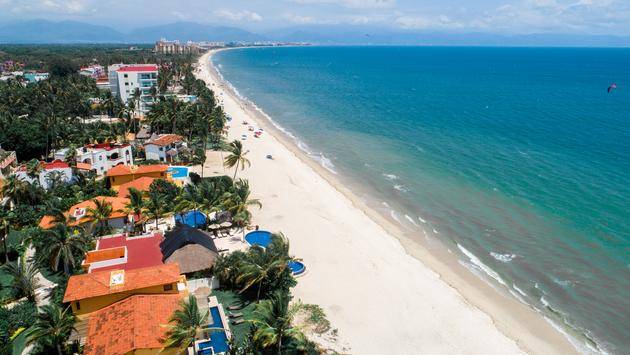
Riviera Nayarit Consolidates Air Connectivity With New Routes
January 03,2022

Looking for a Black Friday Deal? Try Summer 2021 Travel
December 30,2021
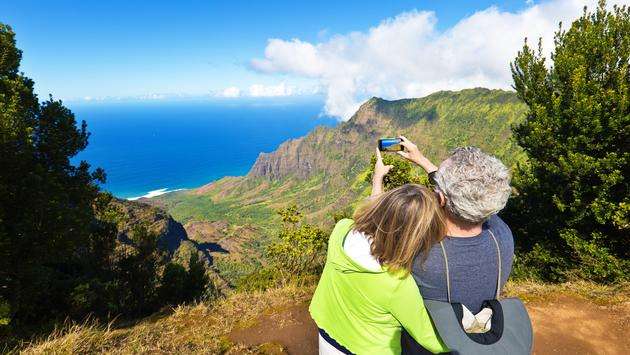
Kauai Drops Out of Hawaii’s Pre-Travel Testing Program
December 28,2021
Most popular articles
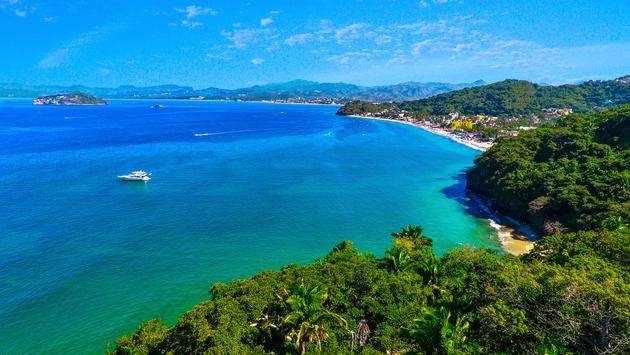
Riviera Nayarit Proves Resilience With New Hotel Openings
January 04,2022
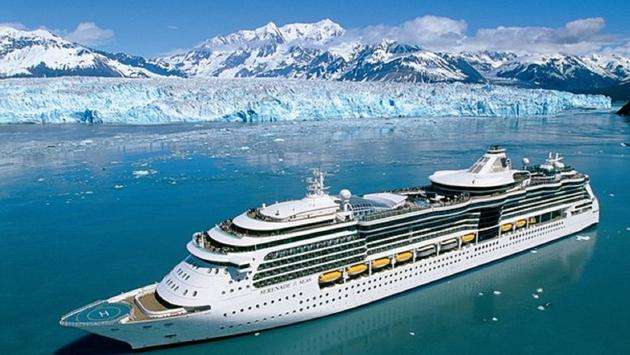
Large Cruise Ships Return to Alaska
December 29,2021
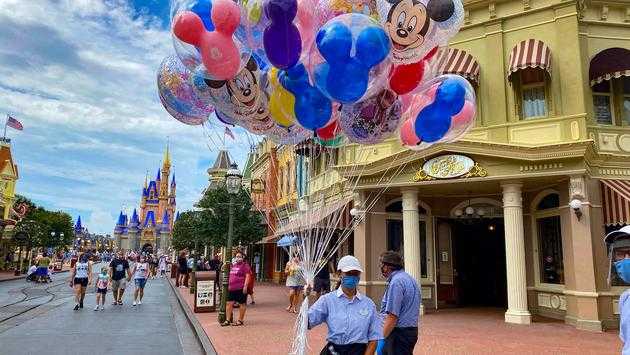
How to Score Free Disney World Theme Park Tickets in 2021
December 26,2021
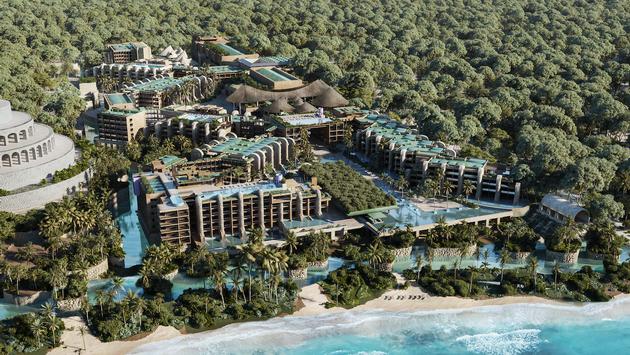
Hotel Xcaret Arte To Make Its Debut in July 2021
December 25,2021
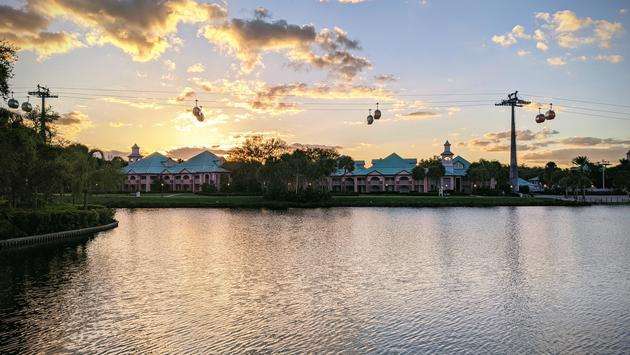
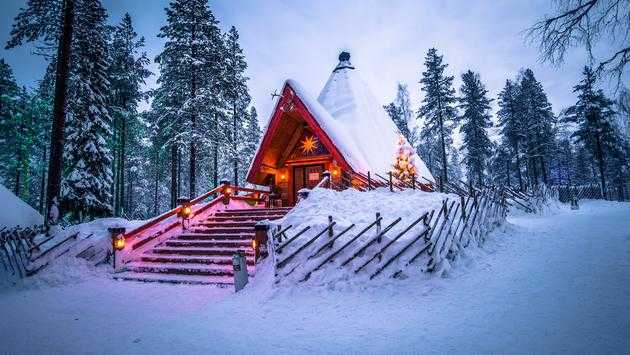
Families Can Virtually Visit Santa With Finnair
December 20,2021
Popular articles
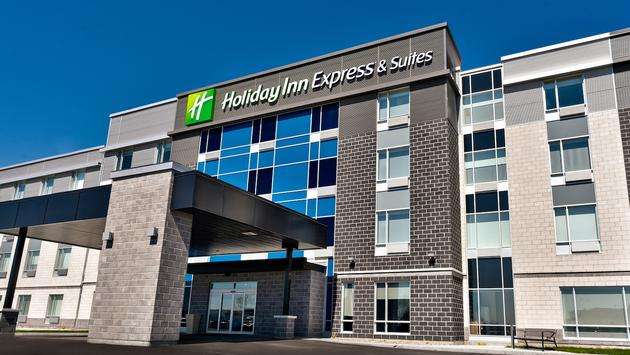
Public Donates More Than $100K To Harassed Hotel Worker
January 02,2022
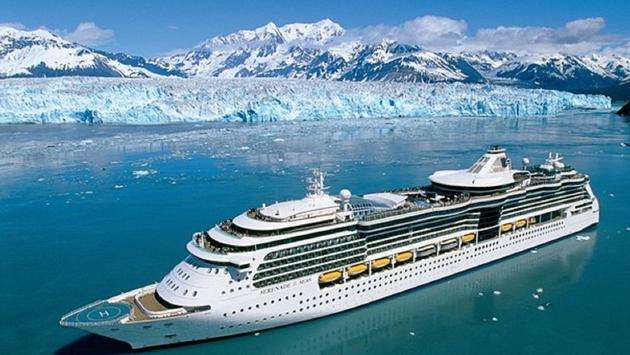
President Biden Signs Law To Restart Cruising in Alaska
January 01,2022
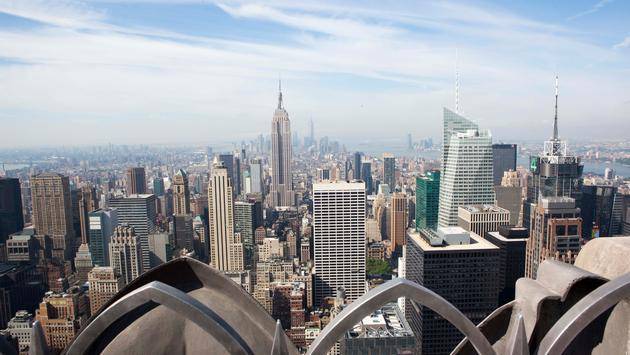
New Proposal Would Create 24-Hour Nightlife Zones in New York City
December 31,2021
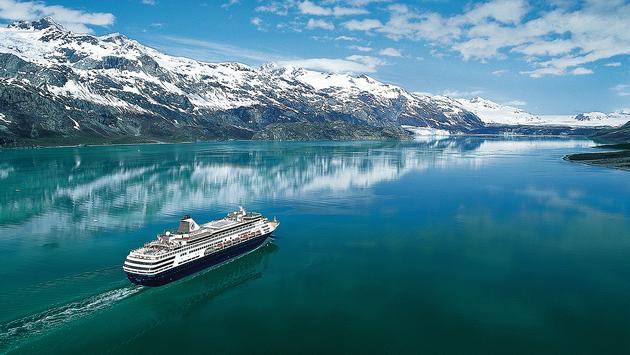
Holland America Line Launches 'BIG' Wave Season Offer
December 23,2021
Categories
Favorite articles
Riviera Nayarit Consolidates Air Connectivity With New Routes
January 03,2022
Looking for a Black Friday Deal? Try Summer 2021 Travel
December 30,2021
Kauai Drops Out of Hawaii’s Pre-Travel Testing Program
December 28,2021
Most popular articles
Riviera Nayarit Proves Resilience With New Hotel Openings
January 04,2022
Large Cruise Ships Return to Alaska
December 29,2021
How to Score Free Disney World Theme Park Tickets in 2021
December 26,2021
Hotel Xcaret Arte To Make Its Debut in July 2021
December 25,2021
Families Can Virtually Visit Santa With Finnair
December 20,2021
Popular articles
Public Donates More Than $100K To Harassed Hotel Worker
January 02,2022
President Biden Signs Law To Restart Cruising in Alaska
January 01,2022
New Proposal Would Create 24-Hour Nightlife Zones in New York City
December 31,2021
Holland America Line Launches 'BIG' Wave Season Offer
December 23,2021

